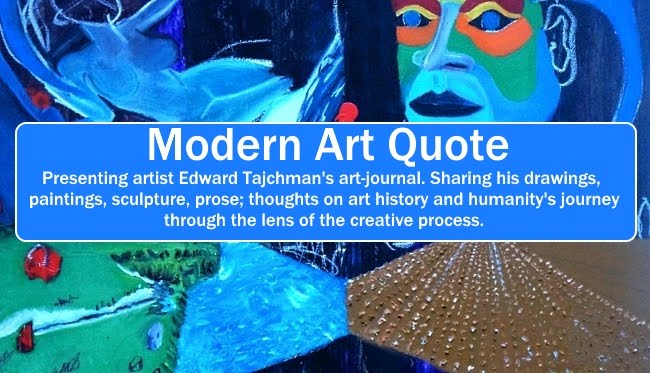Today I am discussing one of the early pioneers of modern art, an artist whose influence in this area is definitely unsung - Marsden Hartley (1877 - 1943). He was one of the earliest American modern artists, and his vibrant colors, style, and unique view of the world helped pave the way for modern art to thrive in the new century.
His abstract style was partially influenced by time he spent living in western Europe; by artists like Kandinsky, The Fauvists and Franz Marc. Hartley was born in Maine, into a fairly idealistic but lonely childhood, (his mother died when he was eight). He later attended the Cleveland Institute of Art, and also the National Academy of Design when he moved to New York. It is in New York where he met his most important art world contacts and influences; Alfred Stieglitz and Albert Pinkham Ryder. Here is a quote from his book Adventures in the Arts, Informal Chapters on Painters, Vaudeville, and Poets, published in 1921:
In addition to Kandinsky, the Fauves, and Picasso amongst others, a great influence on Hartley was Paul Cezanne; who's bold brushstrokes and vibrant way of seeing and painting the world he greatly admired. In the quote from Hartley below, he is referring to the actual physical way one sees the world. The way the health of the eye can influence the way one sees, and therefore obviously influencing the style of that artist; something he attributed to helping Cezanne form his style of painting.
Hartley led a fairly nomadic lifestyle, spending the early years of the 20th century traveling not only the southwest U.S., but western Europe also. Later in life he returned to Maine, and this return included a move away from the abstract style which he helped to pioneer, and into a more rustic and regional style reflective of his boyhood home.
His abstract style was partially influenced by time he spent living in western Europe; by artists like Kandinsky, The Fauvists and Franz Marc. Hartley was born in Maine, into a fairly idealistic but lonely childhood, (his mother died when he was eight). He later attended the Cleveland Institute of Art, and also the National Academy of Design when he moved to New York. It is in New York where he met his most important art world contacts and influences; Alfred Stieglitz and Albert Pinkham Ryder. Here is a quote from his book Adventures in the Arts, Informal Chapters on Painters, Vaudeville, and Poets, published in 1921:
"Life as an idea engrosses me with the same ardor as in the earlier boyish days, with the difference that there is much to admire and so much less to reverence and be afraid of. I harp always on the 'idea' of life as I dwell perpetually on the existence of the moment."
In addition to Kandinsky, the Fauves, and Picasso amongst others, a great influence on Hartley was Paul Cezanne; who's bold brushstrokes and vibrant way of seeing and painting the world he greatly admired. In the quote from Hartley below, he is referring to the actual physical way one sees the world. The way the health of the eye can influence the way one sees, and therefore obviously influencing the style of that artist; something he attributed to helping Cezanne form his style of painting.
"Physical vision is responsible for nearly everything in art, not the power to see but the way to see. It is the eye perfect or the eye defective that determines the kind of thing seen and how one sees it."
-Marsden Hartley, Adventures in the Arts: Informal Chapters on Painters, Vaudeville, and Poets, 1921.
Mountain Lake - Autumn, ca. 1910. Marsden Hartley
Digg It!  ,
, 












3 comments:
Thanks for introducing us to Hartley's work - I had never heard of him. I really liked the later painting you posted - his use of color and brush strokes really makes for a powerful image.
I was interested in his comment about the physical health of the eye. I've experienced this myself - I work with color all day (I run a fine art printing studio). Several years ago I was diagnosed with a cataract in one eye and had a new lens put in. So I had one old lens (I'm over 50 so it's been used a lot!) and one new one. The difference between the two as I would open first one eye and then other was startling. The old lens saw the world less sharp and yellowed while the new lens saw everything as if the window had been wiped. Our vision often changes so slowly we are unaware of how it really functions. Now I know why everyone sees colors so differently!
Thanks for creating such a great site. . . I've really enjoyed reading any number of the posts.
-Hi Bob,
I am noticing that years of drawing up close and focusing has taken at least a small toll on my eyes; things are definitely not quite as clear as they used to be anyways. I take my glasses off sometimes and before refocusing it's like an impressionist painting I'm seeing.
-Thanks for reading and thanks for the compliment, K. Whitton-Williams
Post a Comment